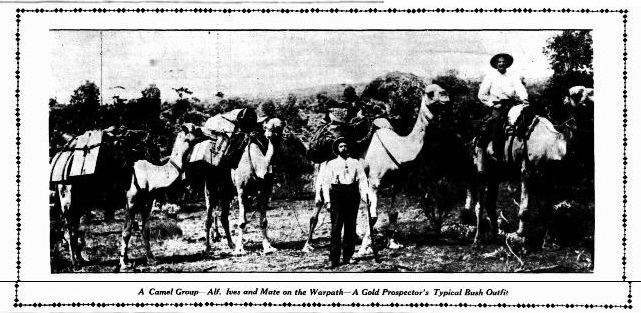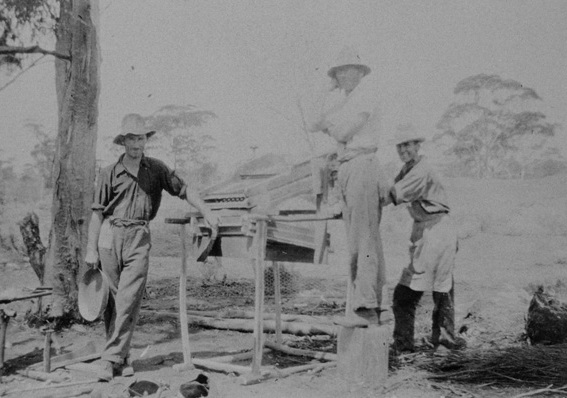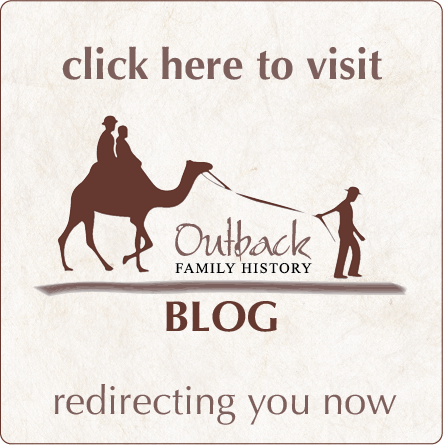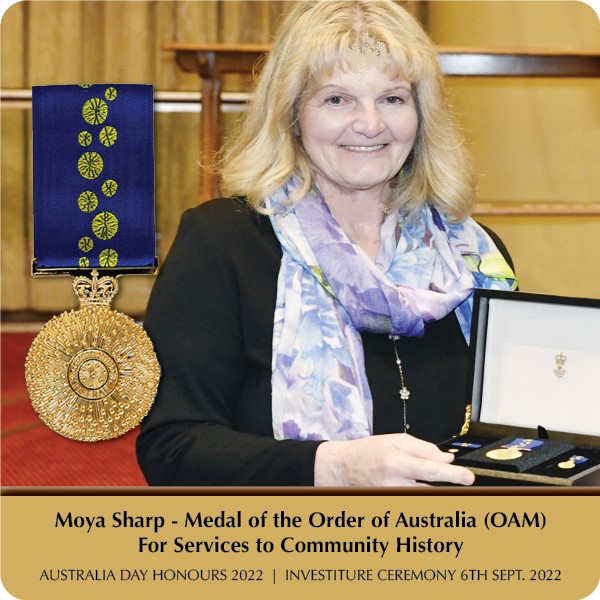- Aboriginal History
- Cemeteries
- Hospitals
- Hotels
- Maps of the Goldfields
- Military
- Miners
- Miscellaneous
- People
- Places on the Goldfields
- Place Index A-Z
This website is dedicated to the memory of my two dear friends Sandy Duncan and Shyama Peebles who both passed away in 2012.
St Ives > St Ives - About
St Ives
GPS - 31° 18' 50'' South , 121° 44' 22'' East
Shire of Coolgardie

Sunday Times 12 February 1911, page 32 - Alfes Ives and Mate.
Gold district located in the southern part of the Norseman-Wiluna greenstone belt within the Eastern Goldfields Province of the Yilgarn Craton. Located south of Kambalda. It is presently owned and operated by South African based Goldfields company.
The closest a visitor can get is the Red Hill lookout at the northern end near Kambalda East. The abandoned Red Hill pit is at the base of the hill near Lake Lefroy.In the middle of the lake is an island containing several closely spaced deposits, open pits, and one underground mine. These are again from the north, Belleisle underground, Mars, Minotaur, Agamenon Main, East, West and South, North Revenge Kapi, West Revenge, Revenge Grinder, Delta South and Pluton.
A short distance south and east of the road is Paddy's/West Idough. Then a few kilometres south another group of mines between the access road (west) and lake. This includes Apollo, Argo underground, Athena underground, Hamlet underground, and the small pits of Blue Lodge Cutback, Clifton West, Boxcut, and Diana. Heading a few kilometres further south is the Junction Mine at the southern limit of the leases. Further south is the Lanfranchi nickel The company is also actively mining at the underground Cave Rocks mine, north-west of Kambalda.
St Ives is named after prospector Pat Ives, who discovered gold here. The Ives Reward Mine opened in 1919. It closed in 1926 after producing 10 Koz of gold. The small town which had developed next to the mine was abandoned.
In 2001, South African based miner Gold Fields Ltd purchased it. They also own the Agnew Gold Mine in Western Australia. Production is over 500 000oz of gold pa. Cave Rocks and Belleisle mines were opened in 2007 (Belleisle closed 2011), a new open pit at Leviathan in 2008, the Hamlet-Athena deposit was discovered in 2009, and the Athena mine opened in 2011.
<span style="color: rgb(0, 0, 0); font-family: " noto="" sans",="" "lucida="" sans="" unicode",="" grande",="" tahoma,="" verdana,="" arial,="" sans-serif;="" font-size:="" 13.3333px;"="">Gold mineralisation is found in all rock members, but is most concentrated in the mafic parts, above the Kambalda Komatiite. It is found in basalts, dolomite, slate where it is associated with quartz stockworks and vein arrays, breccia, localised north north-west shear zones in very fine grained sections (mylonitic) and quartz sections, and off-shoots from the regional Boulder-Lefroy fault. Structural features are surrounded by an alteration zone with a core of albite-ankerite/dolomite-quartz-pyrite. Gold is found associated with the pyrite. This core is surrounded by a biotite zone, then an enhanced chlorite zone, before the regional greenschist metamorphic rocks.

Dryblowing at St Ives 1930 - Photo SLWA
.jpg)
St Ives Location - map Bonzel
| Return to St Ives | Next Record St Ives deaths |










